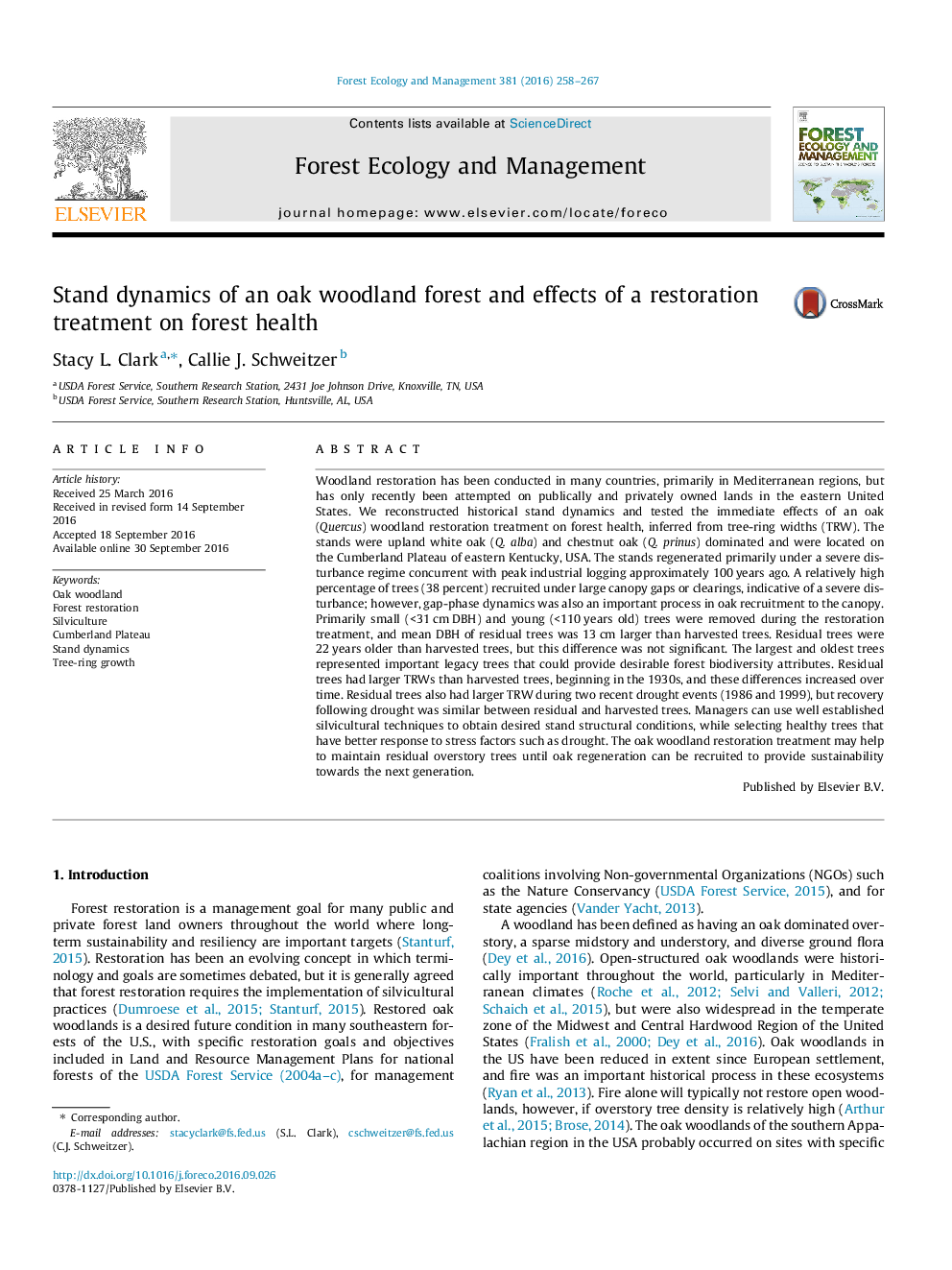| کد مقاله | کد نشریه | سال انتشار | مقاله انگلیسی | نسخه تمام متن |
|---|---|---|---|---|
| 6459570 | 1421377 | 2016 | 10 صفحه PDF | دانلود رایگان |
• Oaks became dominant through an intensive disturbance regime 100 years ago.
• A disturbance occurred every 3 years across six 10-ha stands.
• A woodland restoration treatment favored trees with larger tree-ring growth.
• The treatment favored trees with larger growth during recent drought events.
• Silviculture can simultaneously meet ecological and utilitarian objectives.
Woodland restoration has been conducted in many countries, primarily in Mediterranean regions, but has only recently been attempted on publically and privately owned lands in the eastern United States. We reconstructed historical stand dynamics and tested the immediate effects of an oak (Quercus) woodland restoration treatment on forest health, inferred from tree-ring widths (TRW). The stands were upland white oak (Q. alba) and chestnut oak (Q. prinus) dominated and were located on the Cumberland Plateau of eastern Kentucky, USA. The stands regenerated primarily under a severe disturbance regime concurrent with peak industrial logging approximately 100 years ago. A relatively high percentage of trees (38 percent) recruited under large canopy gaps or clearings, indicative of a severe disturbance; however, gap-phase dynamics was also an important process in oak recruitment to the canopy. Primarily small (<31 cm DBH) and young (<110 years old) trees were removed during the restoration treatment, and mean DBH of residual trees was 13 cm larger than harvested trees. Residual trees were 22 years older than harvested trees, but this difference was not significant. The largest and oldest trees represented important legacy trees that could provide desirable forest biodiversity attributes. Residual trees had larger TRWs than harvested trees, beginning in the 1930s, and these differences increased over time. Residual trees also had larger TRW during two recent drought events (1986 and 1999), but recovery following drought was similar between residual and harvested trees. Managers can use well established silvicultural techniques to obtain desired stand structural conditions, while selecting healthy trees that have better response to stress factors such as drought. The oak woodland restoration treatment may help to maintain residual overstory trees until oak regeneration can be recruited to provide sustainability towards the next generation.
Journal: Forest Ecology and Management - Volume 381, 1 December 2016, Pages 258–267
